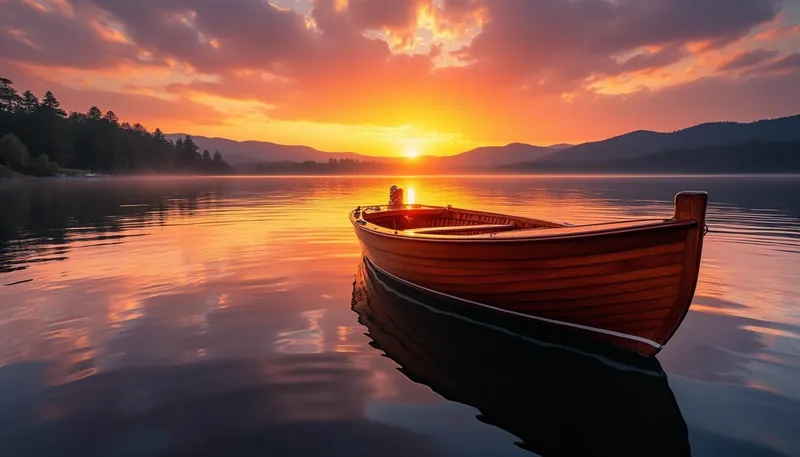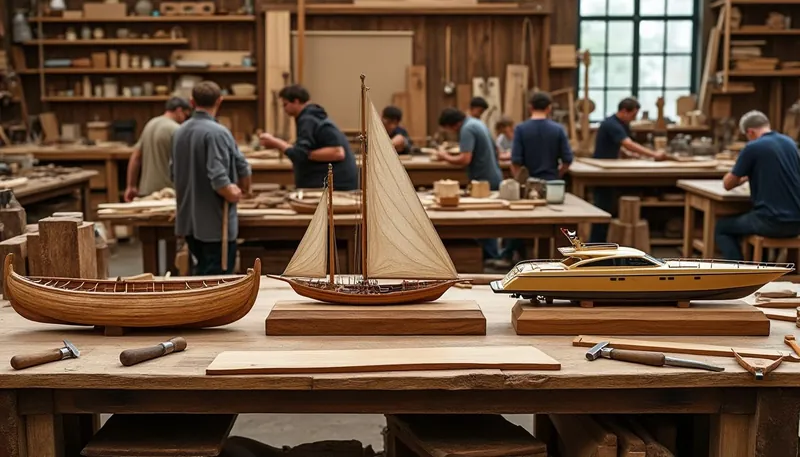Building a wooden boat is not just a project; it’s a journey steeped in tradition, craftsmanship, and often a love for the sea. Choosing the right type of wood can feel like finding the perfect soulmate for your vessel. Imagine floating on calm waters, the sun setting over the horizon, and the satisfaction of knowing you’ve crafted your dream boat. But what types of wood will stand the test of time against the elements and provide a strong, beautiful structure? In this article, we’re diving deep into the world of boat-building wood, exploring some of the best types you might consider for your nautical masterpiece.
Brief
- Understanding the types of wood commonly used in boat building is essential for durability and aesthetics.
- Hardwoods like Mahogany and Teak offer strength and rot resistance, making them popular choices.
- Softwoods like Cedar and Pine are lightweight and easy to work with, providing versatility.
- Factors to consider include water resistance, weight, and maintenance requirements.
- Each type of wood has unique characteristics that can influence your boat’s design and function.
Mahogany: The Classic Choice for Boat Building
Ah, Mahogany—the golden child of boat-building wood. This tropical hardwood has an excellent reputation among shipbuilders for its robust properties. What makes it so attractive? For one, it offers a stunning rich finish that gives any boat an air of sophistication. Imagine a mahogany deck gleaming in the sunlight; it’s hard to resist the allure!
Mahogany is known for its high resistance to rot and can withstand the harsh marine environment. This means your boat will not only look great but also endure the test of time. Additionally, it’s relatively easy to work with, allowing for intricate designs and smooth finishes.
Pros and Cons
- ✅ Advantages: Strong, durable, resistant to water damage, and easy to work with.
- ❌ Disadvantages: It can be expensive, and sourcing sustainably can be tricky.
When deciding to go with mahogany, consider how you’ll maintain it. A bit of annual care can ensure your boat remains in peak condition for decades. In fact, many boat owners report their mahogany boats looking just as glorious after many years.

A Look at Mahogany Varieties
Not all mahogany is created equal! There are different species, each with unique characteristics:
| Species | Properties | Best Uses |
|---|---|---|
| African Mahogany | Resistant to weather, easy to work with | Hulls, interior finishes |
| Cuban Mahogany | Highly sought after for its grain | Fine woodworking, furniture |
| Honduran Mahogany | Strong, with a beautiful reddish hue | Structural components, trims |
Teak: The Highly Prized Marine Classic
If you’re looking for a wood that exudes luxury and functionality, then Teak is your go-to option. It’s no wonder that this wood has been the traditional choice for boat decks and outdoor furniture. Its natural oils offer impressive resistance to water, fungi, and insects—perfect for a boat that spends days on the water.
Another remarkable feature of teak is its durability. Boats built with teak can last decades if properly cared for. Though it tends to be on the pricier side, the long-term investment often justifies the initial cost.
Pros and Cons
- ✅ Advantages: Exceptional durability, natural resistance to decay, and stunning appearance.
- ❌ Disadvantages: Expensive and somewhat complicated to source sustainably.

Teak’s Unique Characteristics
The grain pattern and density of teak make it visually appealing and functional:
| Characteristic | Description |
|---|---|
| Oil Content | Provides natural water resistance |
| Color | Beautiful golden-brown hue, deepens over time |
| Durability | Can withstand heavy wear and exposure to saltwater |
Cedar: Lightweight and Aesthetic
When it comes to softwoods, Cedar is a standout option. Known for its delightful aroma and lightweight properties, cedar is easy to handle, making it the perfect choice for beginners. Plus, it possesses natural insect-repelling qualities, which adds another layer of protection for your boat!
But there’s more! The natural oils in cedar provide some resistance to moisture, meaning it’s less likely to warp or split over time. You’ll often find this versatile wood used in smaller boats, canoes, or as the inner lining of larger vessels.
Pros and Cons
- ✅ Advantages: Lightweight, aesthetically pleasing, and easy to work with.
- ❌ Disadvantages: Not as durable as hardwoods against water damage.
Just a Bit of Maintenance
For those considering cedar, maintenance is relatively straightforward:
- Regular inspection for signs of wear or rot.
- Applying a protective finish regularly will ensure longevity.
- Seal any exposed areas to enhance rot resistance.
Oak: The Traditional Powerhouse
Last but not least, we have Oak, a traditional choice in marine applications. Known for its remarkable strength and hardiness, oak is often used for structural components. Think ribs, frames, and keels! It may be heavier than other woods, but that weight can translate into stability on the water.
Choosing oak means you’re opting for a robust and long-lasting solution. However, it’s essential to treat the wood properly to avoid rotting, especially when exposed to moisture.
Pros and Cons
- ✅ Advantages: Extremely strong and durable, resistant to rot when treated correctly.
- ❌ Disadvantages: Heavy, which can make handling difficult.
Oak Varieties and Their Applications
Let’s check out a few varieties of oak and where they shine in boat building:
| Variety | Properties | Best Uses |
|---|---|---|
| White Oak | Highly durable and resistant to rot | Frames, structural components |
| Red Oak | More affordable, less water resistance | Interior details, less exposed areas |
Frequently Asked Questions
What types of wood are commonly used for boat building?
Commonly used woods include mahogany, teak, oak, cedar, and plywood, each with distinct properties that make them suitable for marine environments.
Why is mahogany a popular choice for boats?
Mahogany is favored for its durability, resistance to rot, and beautiful finish, making it applicable in both structural and aesthetic components.
What are the advantages of using teak for boat decks?
Teak is durable, naturally resistant to moisture and decay, and provides superior traction, making it ideal for deck applications.
Is plywood a suitable material for boat building?
Yes, marine-grade plywood is suitable for boat construction as it withstands moisture and is typically used in smaller boats or as a core material in larger vessels.
What wood should be avoided for boat construction?
Softwoods like pine should typically be avoided for structural components due to lower resistance to rot and structural integrity compared to hardwoods.


